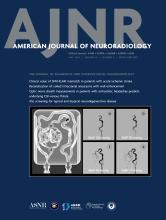This article requires a subscription to view the full text. If you have a subscription you may use the login form below to view the article. Access to this article can also be purchased.
Abstract
SUMMARY: Primary intracranial sarcoma, DICER1-mutant, is a rare, recently described entity in the fifth edition of the WHO Classification of CNS Tumors. Given the entity’s rarity and recent description, imaging data on primary intracranial sarcoma, DICER1-mutant, remains scarce. In this multicenter case series, we present detailed multimodality imaging features of primary intracranial sarcoma, DICER1-mutant, with emphasis on the appearance of the entity on MR imaging. In total, 8 patients were included. In all 8 patients, the lesion demonstrated blood products on T1WI. In 7 patients, susceptibility-weighted imaging was obtained and demonstrated blood products. Primary intracranial sarcoma, DICER1-mutant, is a CNS neoplasm that primarily affects pediatric and young adult patients. In the present case series, we explore potential imaging findings that are helpful in suggesting this diagnosis. In younger patients, the presence of a cortical lesion with intralesional blood products on SWI and T1-weighted MR imaging, with or without extra-axial blood products, should prompt the inclusion of this entity in the differential diagnosis.
ABBREVIATIONS:
- ASL
- arterial spin-labeling
- DCE
- dynamic contrast enhancement
- SDH
- subdural hematoma
- © 2024 by American Journal of Neuroradiology







